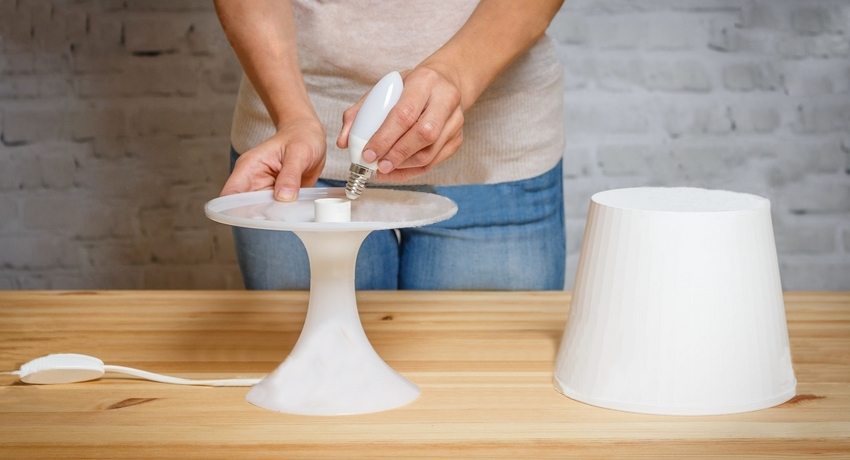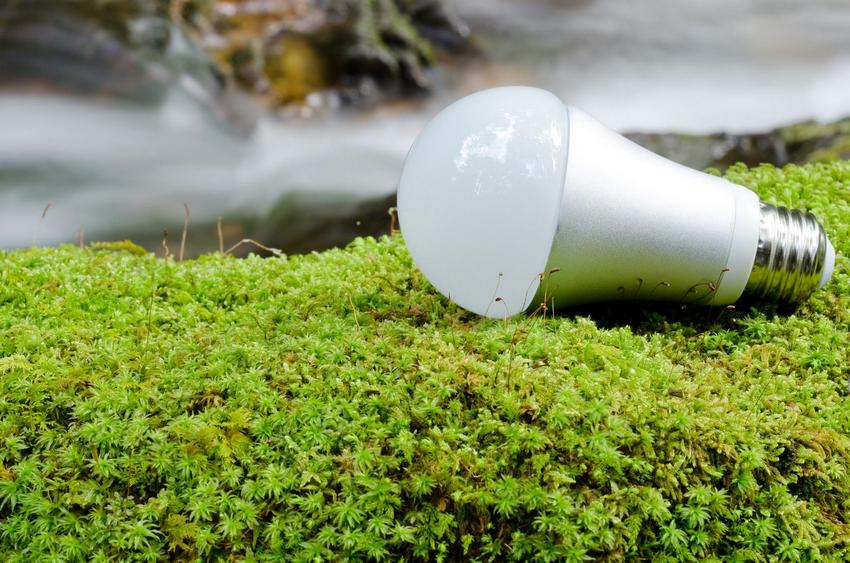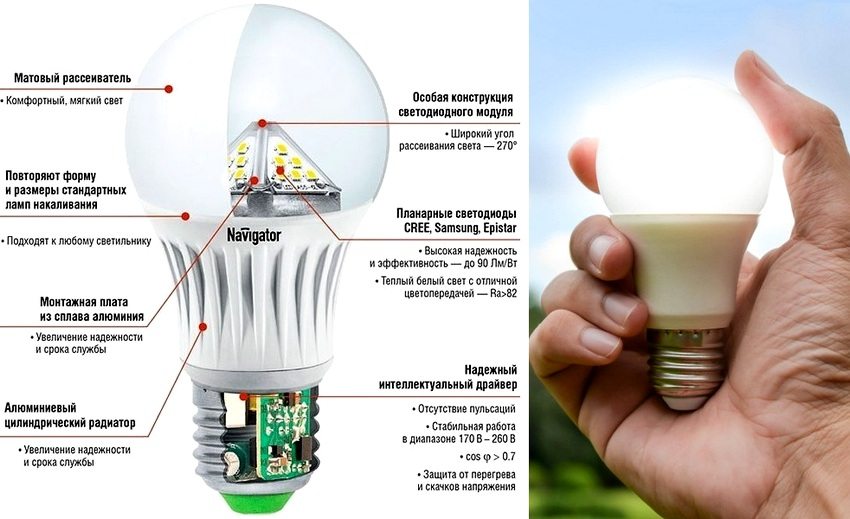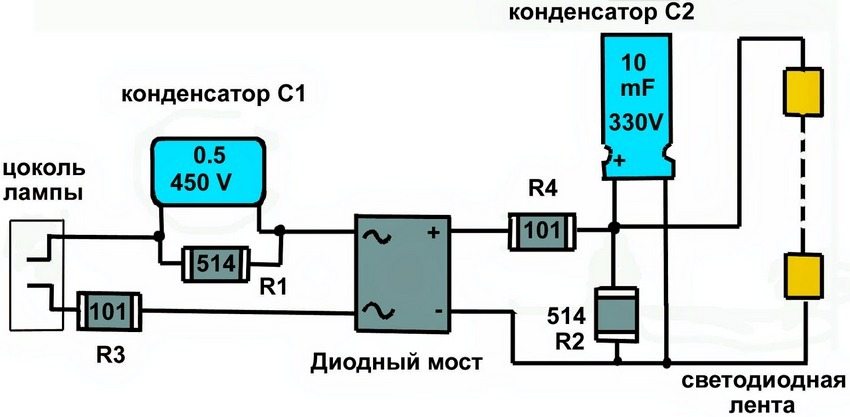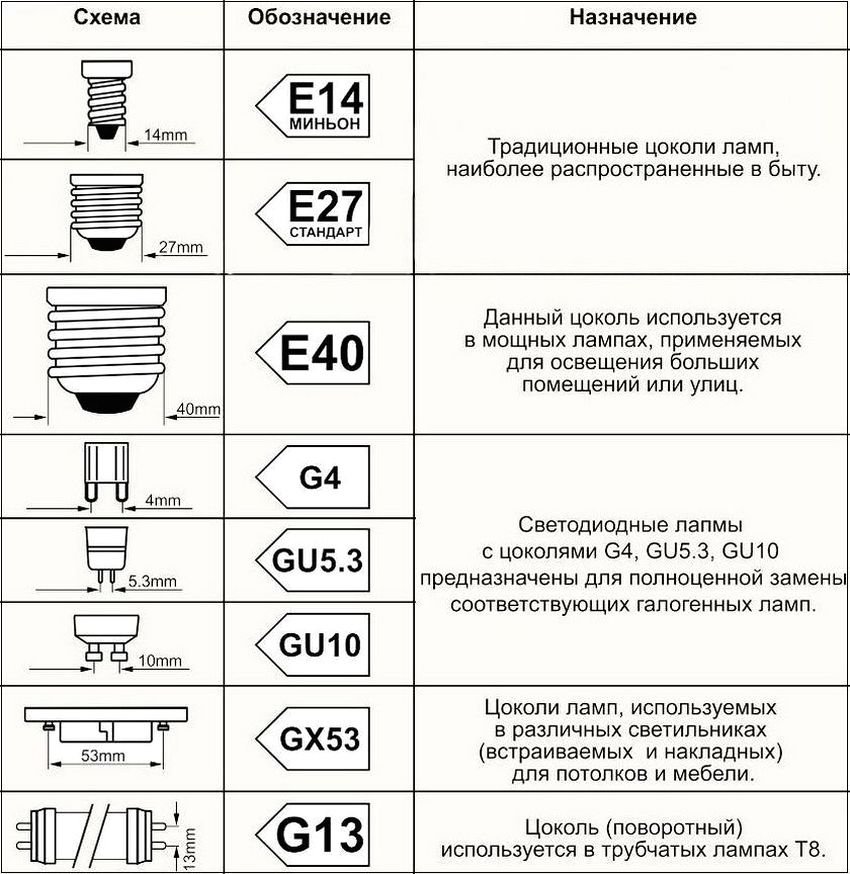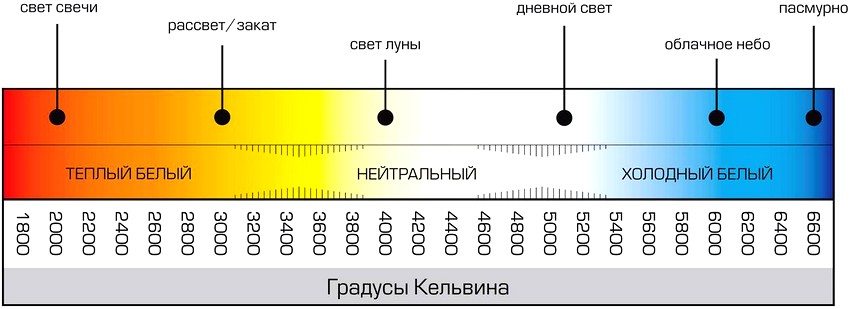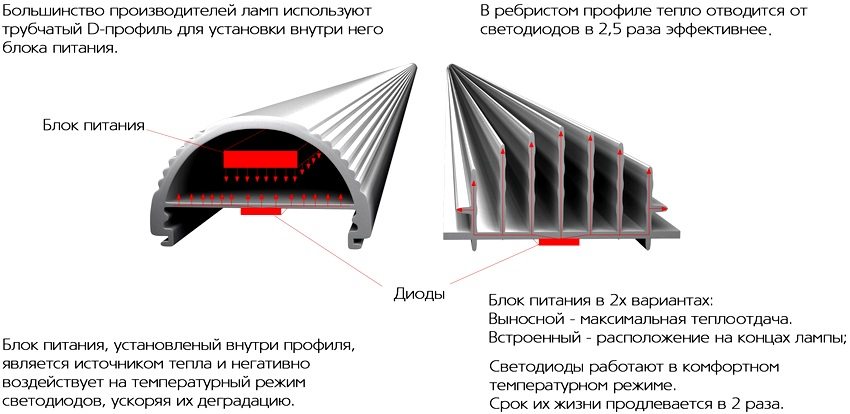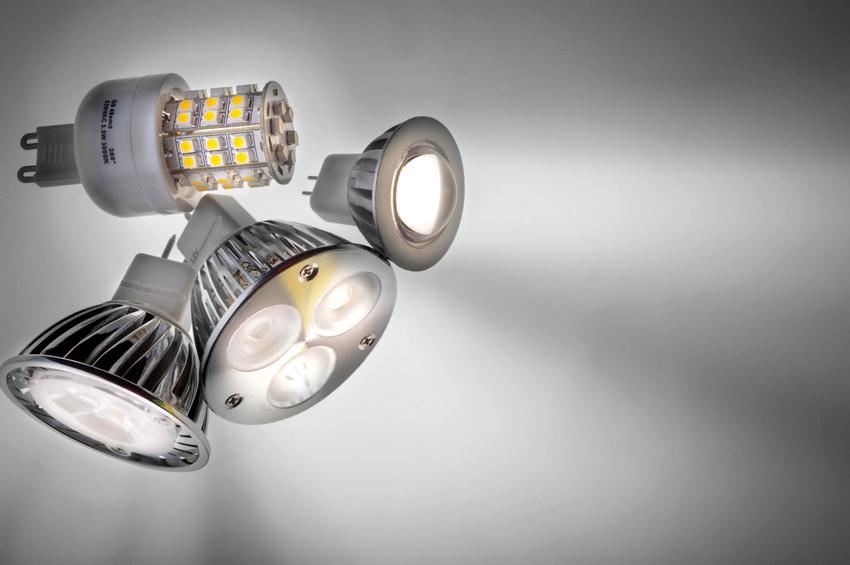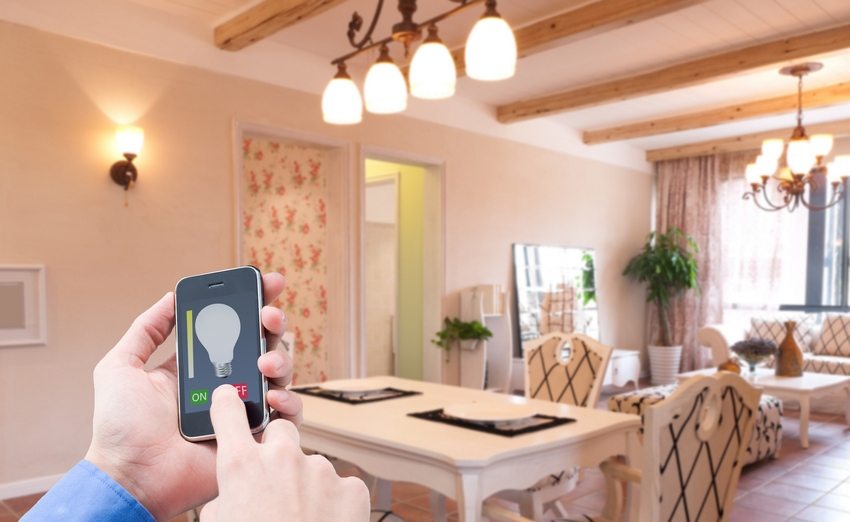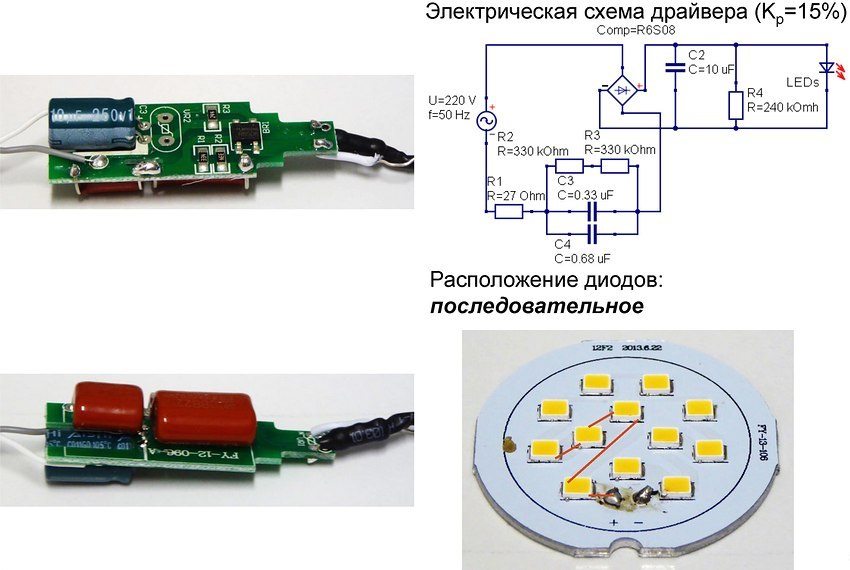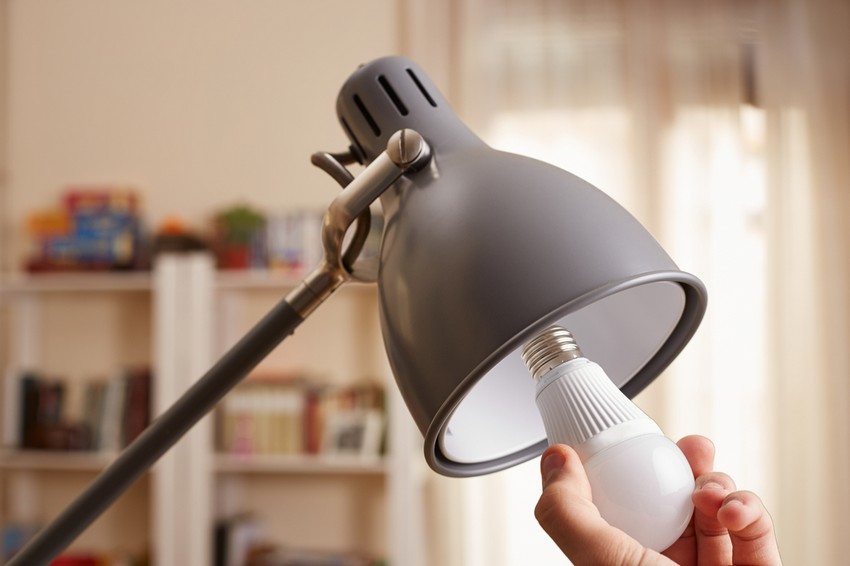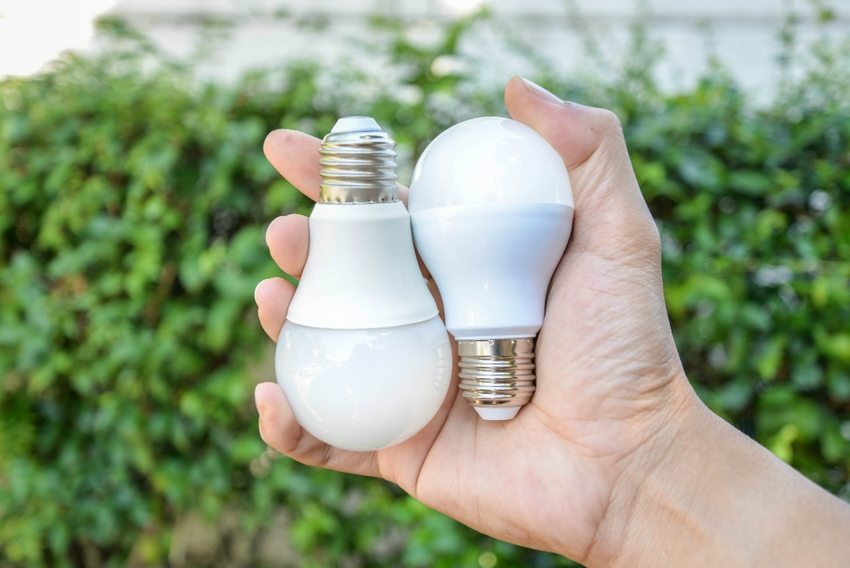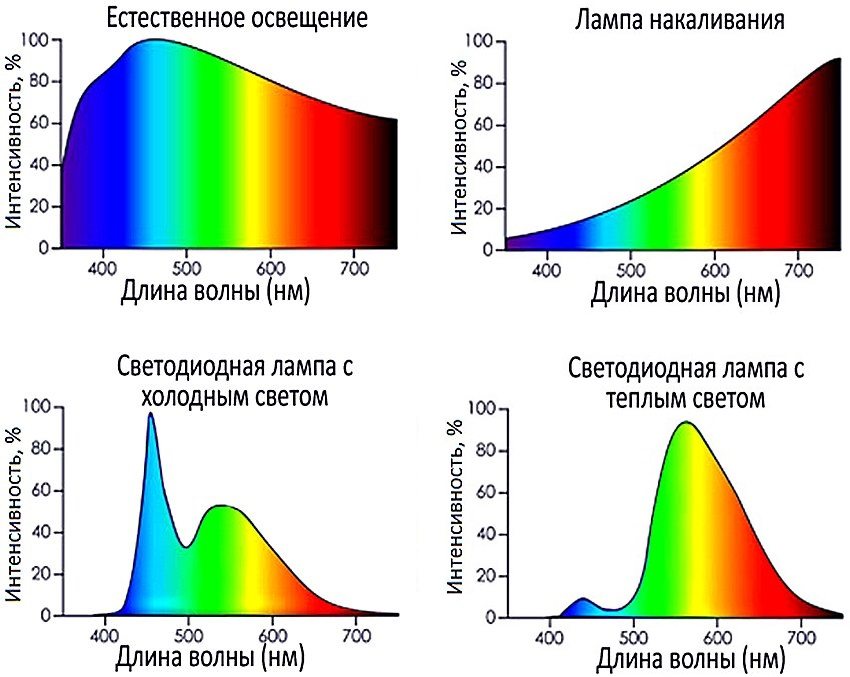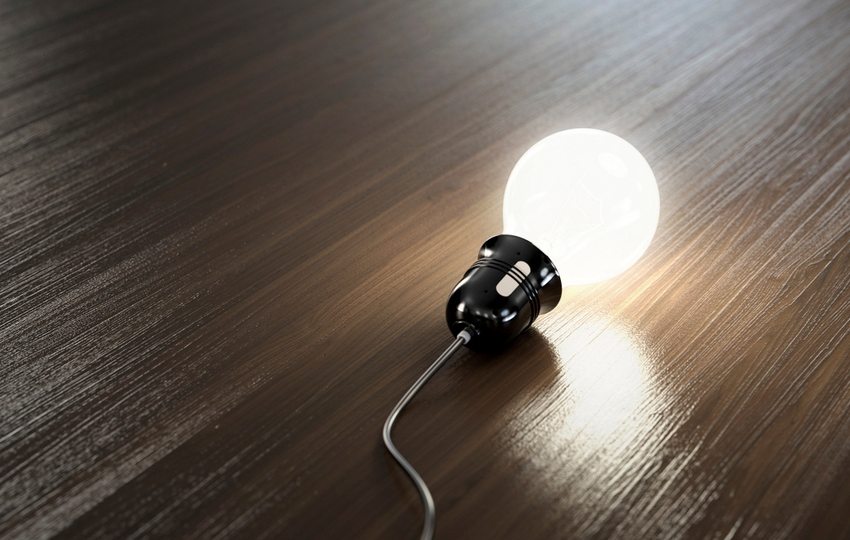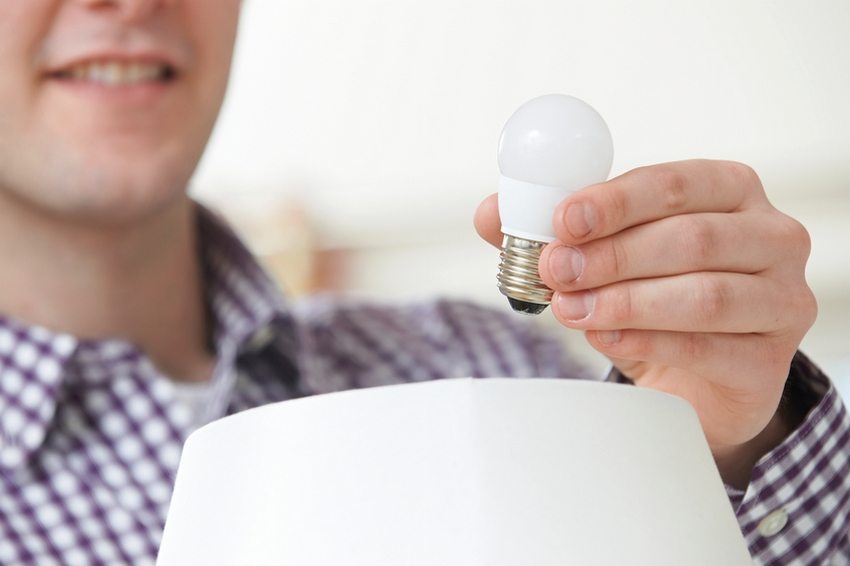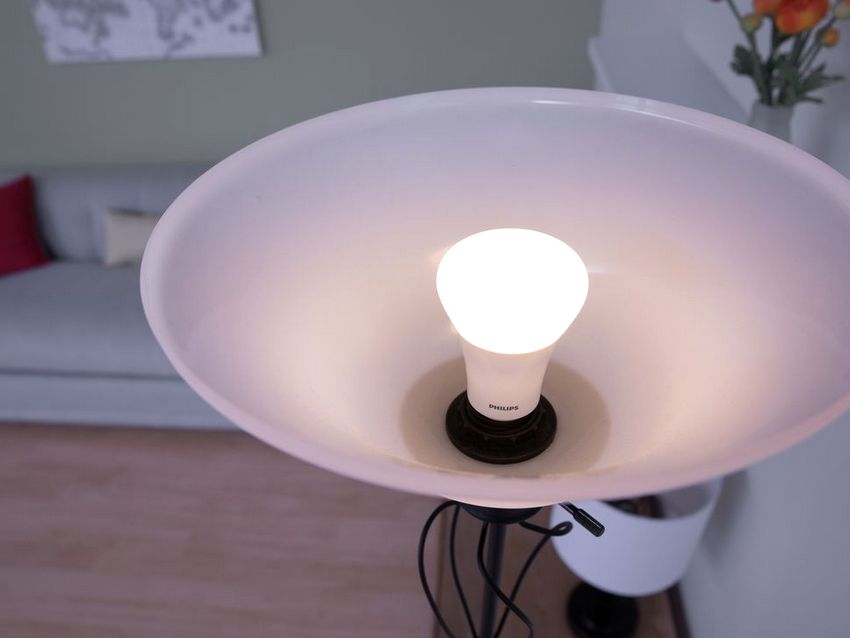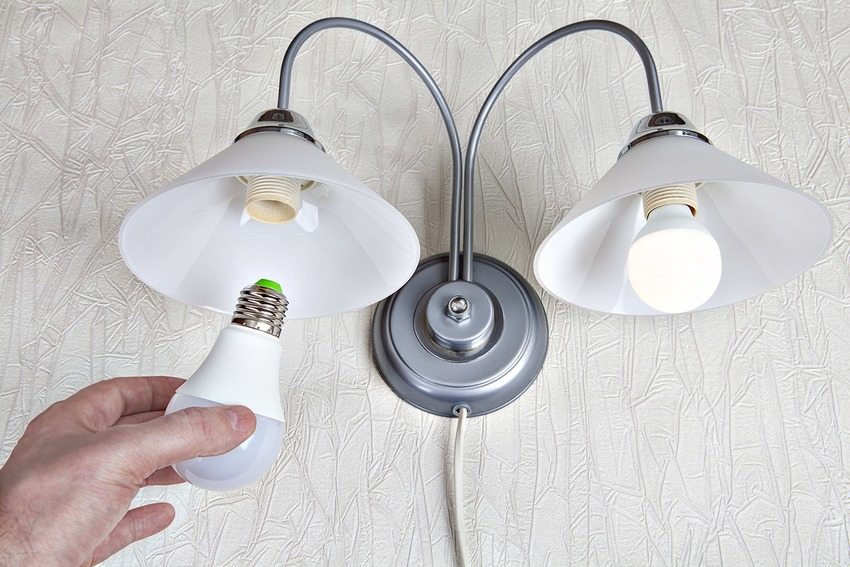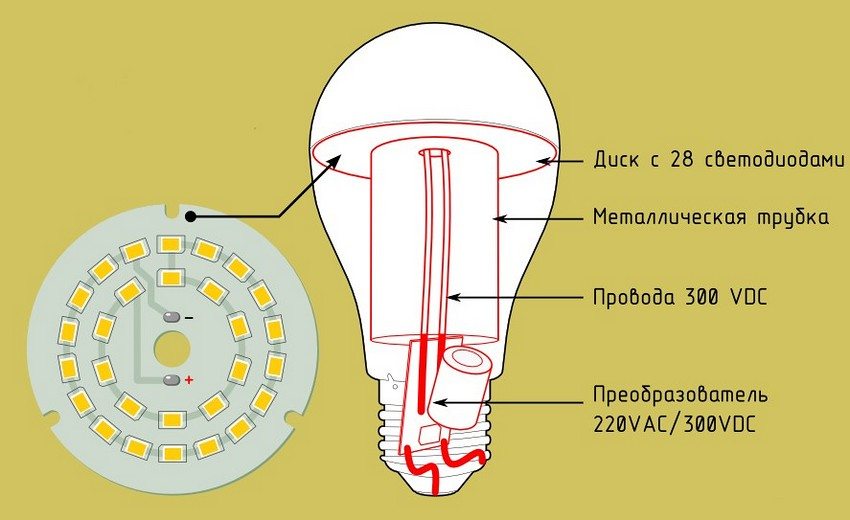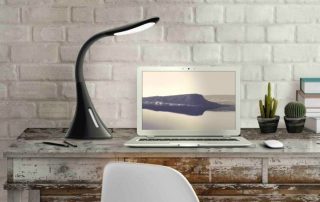A well-chosen lighting design can change for the better not only the interior, but also your mood, giving a feeling of comfort and inner warmth. For ideal lighting, both the design of the luminaires and the correct use of light sources matter. To figure out how to choose LED lamps for your home, you need to familiarize yourself with the parameters that distinguish them from other analogues.
Content [Hide]
- 1 Overview of the main characteristics of LED lamps for the home
- 2 LED lamps for 220V: circuits, device
- 3 How to choose LED lamps for home: a comparative analysis of light sources
- 3.1 Types of LED lamp bases
- 3.2 Indicators of the ratio of the power of LED lamps and incandescent lamps
- 3.3 Compliance of incandescent lamps with LED lamps in terms of light output
- 3.4 Color temperature of LED lamps: choosing the best option
- 3.5 Angle of emission of LED lamps
- 3.6 Functions of a radiator in the design of a led lamp
- 3.7 Types of LED lamps in shape and functionality
- 4 Student Desk Illumination Standards
- 5 Why LED lights are flashing: causes and solutions
- 6 LED lamps for home: product prices
- 7 Review of the best LED lamp manufacturers
Overview of the main characteristics of LED lamps for the home
Many consumers, before buying LED lamps for home, ask themselves: what are the fundamental differences between certain types of lamps and what are the advantages of LED light sources? In this regard, the main technical properties of LED lamps should be noted:
- low power consumption;
- long-term functional resource;
- no "strobe effect" - led lamps form a uniform glow that does not tire the eye;
- high luminous efficiency;
- the ability to glow with all shades of the rainbow spectrum;
- safety of use - lamps are environmentally friendly, do not emit harmful substances and radiation, almost do not heat up and are fireproof;
- the ability to work with voltage drops - in the event of a decrease in voltage in the network, the lamps will work with a lower brightness of the glow;
- versatility - due to the presence of standard socles in the design, LED lamps can be used in previously installed luminaires;
- optimal ratio "price - quality" - manufacturers of LED products are constantly working to improve technical qualities, while the price of products decreases every year.
These properties are common to all LED light sources. However, there are differences between LED lamp models. This concerns the dimensions of the housing, the type of base, the power of the device and many other parameters. Having understood the main characteristics of LED products, we can conclude which LED lamps are best for the home.

For perfect lighting, not only the design of the luminaires is important, but also the correct choice of the type of lamp
LED lamps for 220V: circuits, device
The design of an LED lamp includes the following elements:
- diffuser - to increase the angle and even distribution of light. Usually made of translucent plastic or durable polycarbonate;
- LED system - the number of used LEDs the lamp determines its wattage, size and design. One lamp can use from one to several tens of diodes;
- aluminum PCB - provides heat transfer from the LEDs to the cooling heatsink;
- radiator - made of several aluminum plates. Removes heat from the PCB;
- capacitor - an adapter element used to eliminate the effect of voltage ripples at the output;
- driver - used to convert alternating current. It rectifies and stabilizes the voltage to power the diodes;
- base of the base - made of polymer, it protects the case from electrical breakdown;
- brass base - provides contact with the lamp holder.
In this way, LED lamp is a block of diodes and a resistor-based power supply circuit that limits the current. The circuit of a 220V LED lamp is a sequence in which the mains voltage of 220V is supplied to the bridge rectifier element through the current limiting capacitor, indicated in the diagram C1 and the resistor R2.
As a result, the system of LEDs HL1 is supplied with constant power passing through the resistor R4. The LEDs in the lamp start to glow. The purpose of the capacitor C2 in the circuit is to obtain a smoothed rectified voltage. The discharge of the capacitor C1 when the LED light source is disconnected from the supply voltage occurs through the resistor R1.
How to choose LED lamps for home: a comparative analysis of light sources
The high cost of LED light sources is often the reason for doubts about the advisability of using LED lighting. You can understand this by making a comparative analysis of an LED lamp and an incandescent lamp. Correspondence tables of different lamp characteristics give an idea of the return on investment of LED fixtures.
Types of LED lamp bases
For the convenience of using LED products in a home network, devices are available with various standard base options. This allows you to effortlessly replace old lamps with modern LED lighting sources. Basic types of plinths:
- E 14, E 27 - LED lamps with such a base are quite common among consumers. The numbers indicate the diameter of the base (mm), the base itself has a screw connection system. With the E 14 base, elongated bulbs are usually used for small lamps, wall sconces and floor lamps. The price of LED lamps with an E27, E 14 base depends on their power and the presence of a dimming function;
- GU 10 - the design of the swivel base is a two-pin connector with which the lamp is fixed to the socket. The connectors have bulges at the ends, as evidenced by the “U” symbol in the designation of the electrical accessories. The distance between the pins of such a latch is 10 mm. Used in recessed ceiling luminaires;
- GU 5.3 - The distance between the pins in this base is 5.3 mm. Unlike the GU 10, the pins of this lamp holder do not have bulges.The main application is for spotlights in suspended plasterboard ceilings;
- G 13 - this type of base is used as a holder for ST 8 lamps. The gap between the connector pins is 13 mm. LED lamps with such a base are used for linear and ceiling luminaires in places where it is required to illuminate an area of significant size (supermarket halls, warehouses, etc.).
Useful advice! LED lamps with a pin socket should only be used with sockets with the appropriate pin spacing.
When choosing LED lamps by the type of base, you should give preference to those options that are used in the lamps already installed in your home. If a floor lamp or chandelier have standard lamp holders with a threaded quick-connect system, then the lamp must also be selected with an identical holder.
Indicators of the ratio of the power of LED lamps and incandescent lamps
Until recently, when incandescent lamps were used for lighting, its level was estimated by the power consumption. And if it was required to illuminate a large room, for example, a living room or hall, then a 100 W incandescent lamp was required. In the case of LED light sources, this criterion is somewhat incorrect, since they have different light output. When using LED lamps, some of the power is lost on the adapter.
Thus, the power consumption value does not always indicate the corresponding luminescence brightness. When comparing the power of LED lamps and incandescent lamps, a factor of 8 is used. For example, to obtain the illumination level that a conventional 60 W incandescent lamp gives, an LED analogue with a power of at least 7.5 W will be required, and a 200 W incandescent lamp can be replaced with a led device 30 watts.
For convenience, we present the data on the correspondence between the power of LED lamps and incandescent lamps. It should be noted that the indicators in the tables are average values, however, even with the appropriate adjustment, you can see the advantages of LED light sources.
Table of the ratio of LED lamps and incandescent lamps by power:
| Light source types | Power, W | ||||||
| Incandescent lamp | 20 | 40 | 60 | 75 | 100 | 150 | 200 |
| Led lamp | 2 | 4 | 7 | 10 | 12 | 17 | 25-30 |
Table of correspondence of watts of LED lamps to incandescent lamps and fluorescent devices:
| Light source types | Power, W | ||||||
| Incandescent lamp | 20 | 40 | 60 | 75 | 100 | 150 | 200 |
| Led lamp | 2 | 4 | 7 | 10 | 12 | 17 | 25-30 |
| Luminescent lamp |
6 | 8 | 12 | 15 | 20 | 45 | 70 |
Compliance of incandescent lamps with LED lamps in terms of light output
The choice of led products is impossible without taking into account the ratio of incandescent lamps and LED lamps in terms of luminous flux. Luminous flux is measured in lumen. Not all manufacturers indicate this characteristic on the product packaging. In view of this, many consumers are forced to orient themselves based on power consumption. But if, nevertheless, this parameter is specified, it will not be difficult to choose a product.
Considering that the average luminous flux of an incandescent lamp is 15 lm / W, a 60 W lamp will have a luminous efficiency of 900 lm (60 x 15). The luminous flux of the LED lamp is about 90 lm / W. Multiplying the power of the 11 W device by 90 lm / W, we get 990 lm. Therefore, to obtain identical brightness when replacing a 60W incandescent lamp, an 11W LED lamp can be used.
Useful advice! When organizing lighting in an apartment or house, 6-10 W led lamps will be quite enough. Such devices will give a luminous flux similar to the brightness of the glow when using 60 W incandescent lamps.
Often on the packaging of a led lamp, the correspondence of the brightness of its glow to a similar incandescent lamp is indicated.You can also use the comparison of incandescent, energy-saving and LED light sources in terms of luminous flux.
Correspondence table of LED lamps and incandescent lamps by luminous flux:
| Incandescent lamp | Fluorescent Lamp | LED lamp | |||
| Power, W | Luminous flux, lm | Power, W | Luminous flux, lm | Power, W | Luminous flux, lm |
| 15 | 135 | 5 | 145 | 3 | 360 |
| 25 | 230 | 7 | 250 | 4 | 480 |
| 40 | 430 | 9 | 320 | 5 | 600 |
| 60 | 730 | 11 | 500 | 6 | 630 |
| 75 | 950 | 15 | 875 | 7 | 720 |
| 100 | 1380 | 21 | 900 | 10 | 920 |
Thus, when comparing incandescent lamps and LED lamps, you can see that the more powerful the device, the higher the luminous flux of any type of lamp. However, to obtain the required brightness of the glow, you can use an LED lamp with a much lower power, the energy consumption of which is 8 times lower than that of an incandescent lamp and 3 times for a fluorescent lamp.
Color temperature of LED lamps: choosing the best option
Unlike incandescent bulbs, which give off a warm yellowish glow at any power, LED light sources can emit light in different shades. This is due to the fact that the emission spectrum of the LED lamp has a varied color temperature of the glow, which is provided by two contained spectra: blue from the diode and the spectrum from the phosphor - the substance that fills the lamp. Mixing, these two components give a white glow of different shades.
Thus, when purchasing LED lamps, you need to pay attention to the glow color of the device. Its value is expressed by the value of temperature in degrees Kelvin (K). To convert degrees Kelvin to Celsius, you need to subtract the number 273 from their value, since the zero Kelvin corresponds to 273 ° C.
Like other parameters, the glow color is indicated by the manufacturers in the technical documentation or on the lamp packaging. The designation includes a four-digit number and the letter "K". A lamp that gives a warm white glow when illuminated will have the designation 2700 K, which is identical to the color of the light flux of an incandescent lamp. The color of the neutral (daytime) white glow is similar to the radiation of a fluorescent light source and has the designation 5000 K.
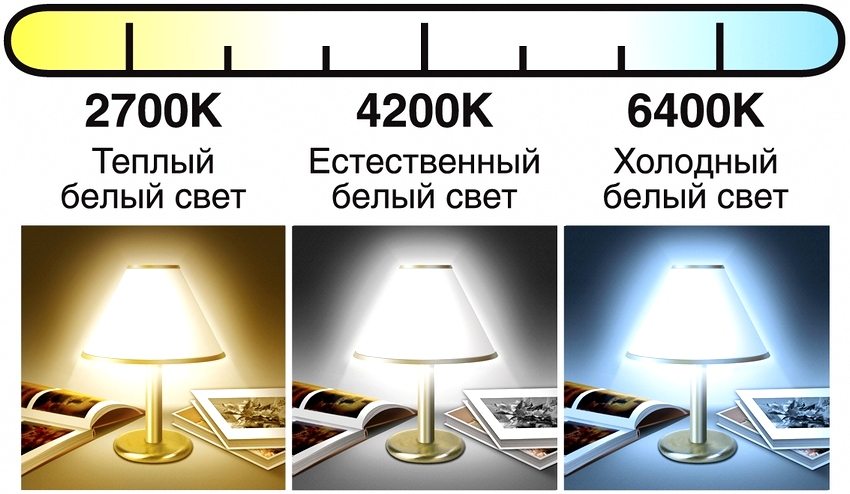
The glow of a diode lamp can be from warm white to cold white, moreover, lamps of this type do not almost heat up during use
The main feature of LED lamps is that they can reach a glow temperature of up to 7000 K and hardly heat up. This indicates that all of their energy is converted into a useful glow. The color of the light emitted can range from warm yellow to cool white.
Useful advice! When decorating the lighting of rooms where elderly people will be, preference should be given to lamps with a neutral white glow. This will help older family members perceive the colors of objects correctly.
Angle of emission of LED lamps
Earlier, when buying conventional lamps, there was no question of what is the angle of this light source. The fact is that incandescent lamps emit light equally in all directions. The luminous flux angle of LED lamps can be different. And this should be taken into account when choosing products.
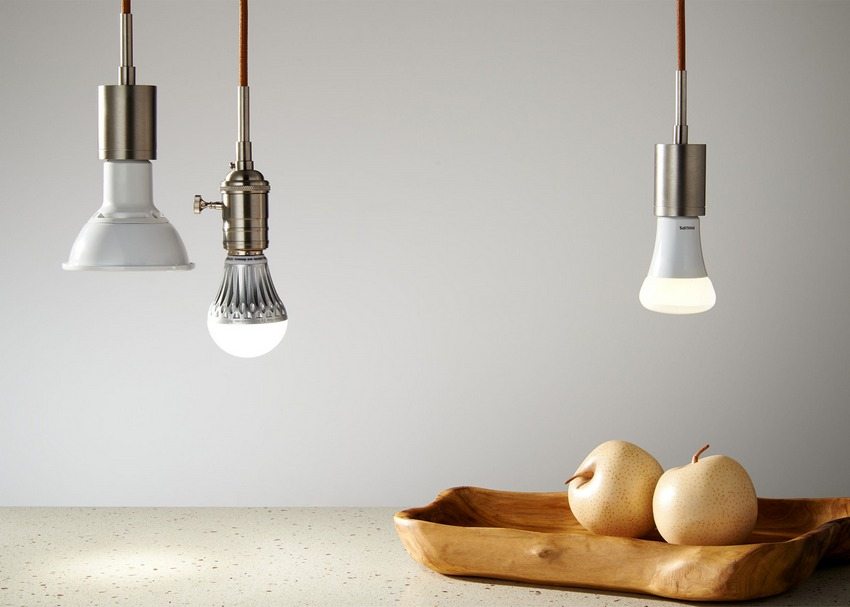
The angle of radiation of LED lamps can be different, which is also an important selection criterion.
If you use LED lamps with a narrow beam in a ceiling chandelier, then, depending on its design, only the place on the ceiling above it or on the floor below it will be illuminated. In this case, the main lighting will not match its function and the room will be twilight.
To choose lamps with the required angle of luminous flux, a table will help, which indicates the value of the scattering angle of different models of lamps and the designation corresponding to this value. As a rule, this parameter is also specified by the manufacturer on the device packaging.
Table showing the magnitude of the angle of dispersion of lamps of different models:
| Scattering angle (degrees) | Technical designation | Lamp-forming illumination |
| < 8 | VNSP | Fairly narrow beam of light |
| from 8 to 15 | NSP | Limited spot |
| from 15 to 20 | SP | Small spot |
| from 24 to 30 | NFL | Directional flow |
| from 35 to 40 | FL | Small stream |
| from 55 to 60 | WFL | Uniform light distribution |
| over 60 | VWFL | Wide luminous flux |
When choosing the angle of dispersion of led lamps, it is necessary to take into account the purpose of the lighting for which they will be used. Narrow beam lamps are suitable for accent lighting of furniture, decor and small areas of the interior. Such devices are also recommended for use in LED desk lamps for a desktop.
Functions of a radiator in the design of a led lamp
To remove heat, a radiator is provided in the design of the LED lamp. This is done to ensure that the diode crystal does not lose its light output property when heated strongly. In addition, the life of the LEDs is reduced when overheated. The radiator itself is located inside between the base and the lamp body.
Radiators made of plastic, covered with a shiny film, are not able to fully remove heat and ensure the safety of the diode. But the radiator is not visible to the buyer purchasing the lamp. In some cases, you can use a simple trick: lightly knock on the outer surface of the radiator with a small metal object and, by the characteristic sound, determine what it is made of.
Modern LED lamps have a heat sink made of aluminum or its alloys. The design of such radiators has a spiral arrangement of fins that have different lengths. This shape ensures good air circulation and good heat dissipation. You can navigate the design of the radiator based on the cost of the product itself. The likelihood that you can buy an LED lamp at a low price with a quality heat sink is very small.
Types of LED lamps in shape and functionality
LED bulbs come in a variety of shapes and sizes. All pin-type lamps are the same in shape. As for the threaded connector, lamps with such a base can have many options:
- pear shape - the standard shape of the lamp, occupies the first positions in the rating of LED lamps for the home. It is used in overall shades. Has a height of 106 to 126 mm and a width of 60 mm;
- spherical shape - such models are mainly used in round small shades;
- candle shape - usually has a "mignon" type base and is used for narrow and flat lamps;
- the shape of a candle in the wind - a creatively shaped lamp, usually with a dimming function, which provides an incredibly beautiful play of crystals;
- reflector lamp - used to create directional illumination in ceiling spotlights;
- corn - the bulb of such a lamp resembles an ear of corn.
Helpful advice! In corn lamps, the outer contacts of the diodes are energized. In view of this, they should be installed in a protective cover.
LED lamps can differ not only in shape and size, but also in their internal content. Depending on functionality, lamps can have:
- pulse drivers on microcircuits;
- RGB LEDs - these bulbs can emit all the colors of the rainbow;
- remote control - the brightness is changed via the radio channel from the remote control;
- built-in power supply battery - work in stand-alone mode;
- control system via Wi-Fi.
There are special lamp models that are not intended for use on a home network. These include 12 volt E27 LED bulbs.The main applications of these light sources are emergency lighting, illumination of workplaces in production, building envelopes, etc. The low voltage supply ensures the safety of people in the workplace.
The use of 12 volt LED lamps, the E27 base is also suitable for non-volatile systems of private cottages, yachts, boats. These lamps provide a stable luminescence of a neutral white tint. The devices are connected to a 220 V network through a transformer for 12 volt LED lamps.
Student Desk Illumination Standards
In view of the fact that the vision of a child at school age is in the process of formation and improvement, it is especially important to choose the right lighting for the desktop at which he will be studying. To do this, it is necessary to take into account not only the location of the table and the lamp, but also choose the right lamp model.
Illumination standards
There are standards for illumination both for various premises and for its individual zones. It goes without saying that daylight is the most favorable for the human eye (including the child's eye). However, given that the child is in class, it is often necessary to do homework at a time when natural light is no longer enough.

When choosing a model table lamp for the child, first of all, it is necessary to be guided by the maximum comfort of the device and its safety
Illumination standards for the desktop require the light output to be even, soft, flicker-free, shadow-free, and within 300 lux. Lux is a unit of illumination created by a stream of light of 1 lm, distributed over a surface of 1 m². To measure the illumination level, a special device is used - a luxmeter.
If the child has a separate room, care must be taken that the curtains in the room let in light as much as possible and that the window does not obstruct foreign objects. In addition to the local lighting of the desk, in the room where the student is studying, it is necessary to use the main light. This will avoid eye strain and fatigue.
Selecting a table lamp model
When choosing a table lamp model, you must be guided by the maximum comfort of the device and its safety. The line of these products includes dozens of models. For comfort desk lamp have a flexible holder that allows them to be quite mobile within the table. Alternatively, you can use a clip-on lamp that fixes the lamp firmly to the surface. The use of such models eliminates the risk of accidental fall.
Helpful advice! The shade of an LED desk lamp for a student must completely cover the light source so that the direct light flux does not cut the eye.
Which is better: LED or energy saving lamp? With regard to light sources used in table lamps, experts recommend the use of LED lamps. They emit a pleasant, uniform light without pulsing, do not burst, do not emit harmful substances and have a minimum heating temperature. The power of the lamp should be selected so that the light is not too saturated and not very dim.
Today, models of LED table lamps with a dimmer are on sale. Such devices have several levels of illumination and touch control of the glow. With the help of a dimmer, it is possible to adjust the brightness to the desired comfortable level. Dimmable lamps are the latest in lighting technology.

For table lamps, it is recommended to use LED lamps, the light of which is as close as possible to natural daylight
Why LED lights are flashing: causes and solutions
Some consumers, having installed LED lamps in the house, notice that their functioning is accompanied by flickering. Such lighting tires the eyes and damages the vision in general. Having understood the reasons for this negative effect, you can find ways to eliminate it.
Why LED lights flash when on
There are several known reasons why LED lamps blink when turned on. Why is this happening:
- incorrect installation - it is necessary to check all the contacts of the circuit, they must be strong;
- mismatch of the adapter power to the lamp used - you can replace the power supply with a new one that matches the power;
- significant voltage surges - the driver may not be able to cope with surges, the level of which is beyond the permissible range;
- product defect during production - it is necessary to replace the light bulb, since this product is accompanied by a guarantee;
- illuminated switch - it is not recommended to use such switches in conjunction with an LED light source, since when such a device is turned off, the circuit is in a closed state and contributes to the glare of the lamp;
- inconsistency in the connection of the wires - the "zero" phase should be output to the lighting device, and the wire with the phase - to the switch;
- the presence of household electrical appliances that create high-frequency interference;
- the life of the LED lamp has expired.
But many people also face another problem when LED lamps light up after being turned off. You can find out why this is happening by familiarizing yourself with the functional features of led lamps.
Why when the light is off, the LED lamps flash or glow
The reason why the LED lamp lights up when the switch is off or flickers intermittently is due to the LED backlit switch. If you replace the illuminated device with a conventional switch, the lamp should stop flashing.
The fact is that in the off state, the wiring device does not fully open the circuit: the main supply of electricity stops, and the backlight LED closes the circuit to itself. The current passing through the diode charges the capacitor of the LED lamp driver, causing it to either blink or emit a dim light.
Another reason why the LED lamp burns when the light is off is a poor-quality product. If you purchased an LED lamp at a low price and its manufacturer is unknown, it is likely that such a device has low-power components. Capacitive capacitors are usually used in light sources offered by leading manufacturing companies. Of course, their cost is high, but they do not flash even when paired with an LED-lit switch.
Why do LED lamps burn out?
The main reasons for the failure of LED light sources are poor product quality or external influences. The latter include:
- significant excess of the supply voltage - if there are power surges in the mains, you should give preference to models designed for 240V or more. You can also resort to using protective blocks and rectifiers;
- poor-quality lamp holders - poor-quality material of the cartridges tends to collapse when overheated, the contacts oxidize, thereby creating even greater heating of the base of the LED lamp;
- the use of powerful lamps in closed-type shades, not provided for the use of powerful light sources;
- use of the mode of frequent on-off of LED lamps - the working life of the lamps is noticeably reduced;
- incorrect wiring diagram - if one lamp fails, the malfunction is transmitted to other light sources in the common circuit;
- poor-quality connection of wires at the nodal points of the power grid - when connecting, it is recommended to use terminals, soldering or other modern connection options.
Helpful advice! Use models of lamps with remote power supplies for LED lighting. In the event of a malfunction, they have access for repair or maintenance.
LED lamps for home: product prices
After getting acquainted with the main characteristics of LED light sources, it becomes clear which lamps are better. Although LED products have a high price, their indisputable technical advantages distinguish them favorably among other devices.
You can buy lamps by ordering products in online stores, on the websites of manufacturing companies, as well as in salons selling lighting equipment. The cost of an LED lamp for a home with an E 27 base analogue of a 100 W incandescent lamp is from 225 rubles. and higher. The price of an LED lamp with an E14 base (mignon type) varies from 96 rubles. up to 750 rubles. per piece, depending on the power of the device.
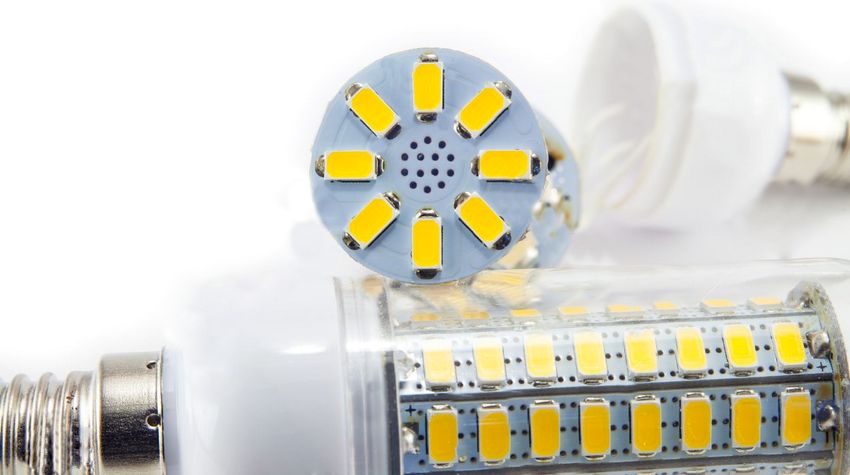
In lamps of the "corn" type, the external contacts of the diodes are energized, as a result of which they should be installed in a protective cover
Almost all products purchased from official representatives have a manufacturer's warranty. The warranty period can be from 2 to 5 years. In addition, any of the purchased LED lamps can be exchanged for a more suitable model or a refund can be issued within a period not exceeding 14 days from the date of purchase.
Helpful advice! In order to avoid any questions when returning LED products, it is recommended to keep the product packaging.
Products from well-known and trusted manufacturers will significantly differ in price from LED products from dubious companies, which will last a maximum of several months. And the quality of the LEDs used in such lamps leaves much to be desired: the real light output of such sources is much worse than the declared parameters.
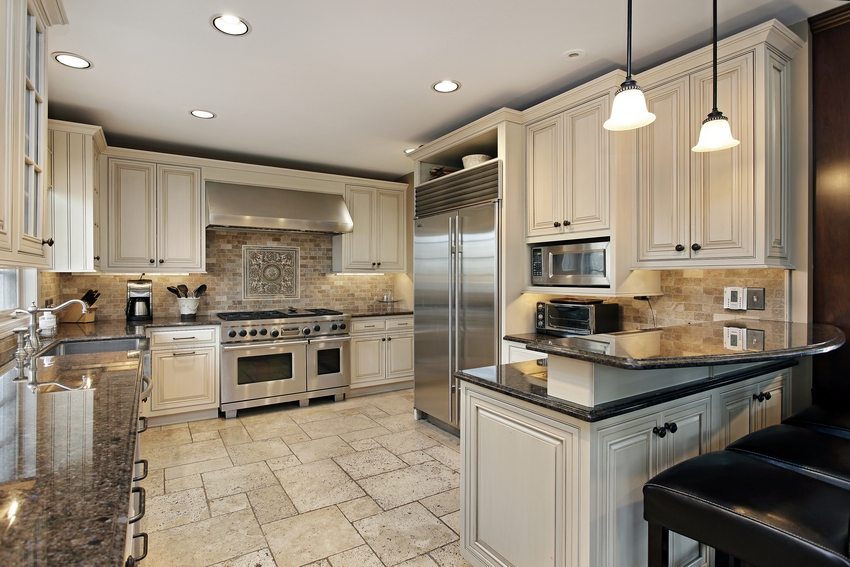
With the help of modern diode lamps, you can achieve truly comfortable and harmonious lighting in the room.
The mass production of LED products is growing every year. In this regard, a decrease in cost is predicted by about 25-30%. Nevertheless, the recoupment of LED lamps is possible even if purchased at current prices.
Review of the best LED lamp manufacturers
A fairly large number of manufacturers are engaged in the production of LED products. The only question is how high-quality products they produce. To purchase a solid and durable LED lamp, you should check out the leading LED lamp manufacturers, who accompany their product with a long-term warranty.
Which LED lamps are better to buy? The rating of the leading manufacturers includes:
- Philips is a pioneer in the development of innovative energy efficient lighting products. The company's products are of high quality, durability and compliance with the declared technical characteristics. The prices for the products of this brand are quite high;
- the German company Osram is a global manufacturer in the field of high-tech street, office and domestic lighting. The products of this company are economical, with a long service life and meeting all technical requirements. The high cost of LED lamps pays off quickly;
- Gauss trademark - manufacturer TPK "Varton" manufactures products using new technologies.The devices manufactured by the company are environmentally friendly, have an original design and a long service life. All products are certified and undergo quality control. The products were recognized as the best in terms of price-quality ratio;
- ASD is a well-known Russian manufacturer of lighting equipment. It specializes in the production of LED products: panels, lamps, ribbons, spotlights, etc. The devices work perfectly both in domestic use and in the production area;
- Ecola - the priority direction of the company is pro
production of a wide range of quality and affordable products. The main line is the production of LED luminaires used for illumination in suspended ceiling structures. The products are characterized by low energy consumption and long service life; - GC "Cosmos" - products are manufactured under the trademarks Cosmos and Supermax. The main direction is lamps, lanterns, seasonal lighting devices, batteries. The price of the product is designed for a wide segment of buyers;
- TM Jazzway - specializes in the production of all types of light sources, as well as extension cords, power supplies, chargers, flashlights and other lighting products. The lamps have a robust plastic protective housing. Excellent price-quality indicator;
- Feron - the company's assortment includes more than 4000 items of products, including light sources, holiday lighting, lamps, accessories. All products are manufactured using nanotechnology and are highly precise in assembly.
Helpful advice! Lighting specialists strongly insist on purchasing lamps only from leading lighting manufacturers.
Getting acquainted with the data of the comparison tables of LED lamps and incandescent lamps, we can conclude that the conversion of electrical energy into light in LED sources occurs without losses and with minimal consumption. Their safety and environmental friendliness makes replacing old light sources with LED lighting rational and harmless.
